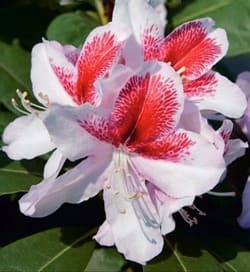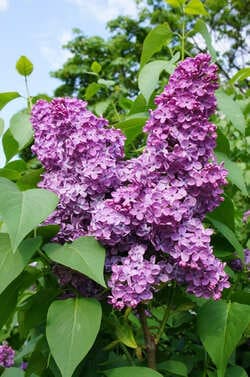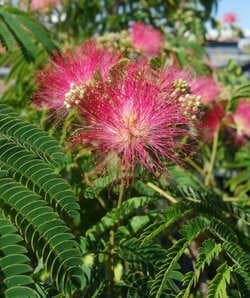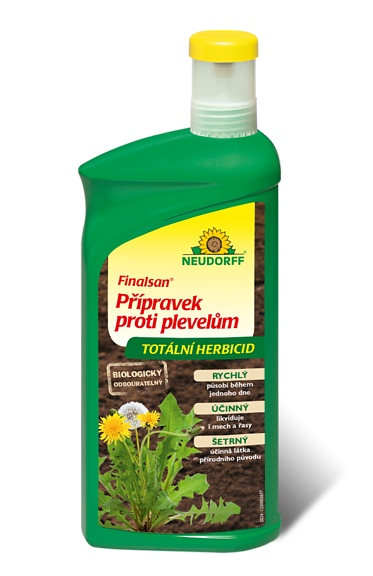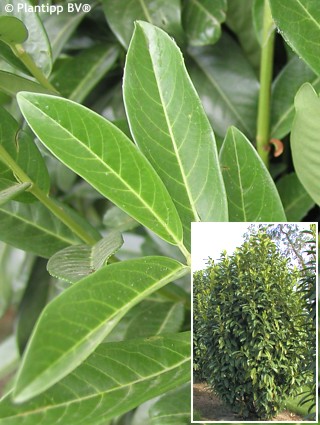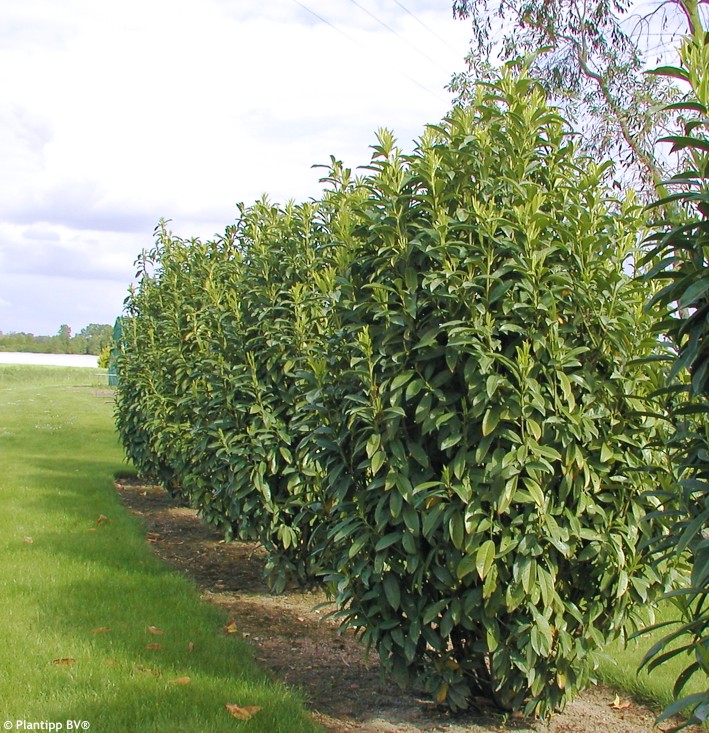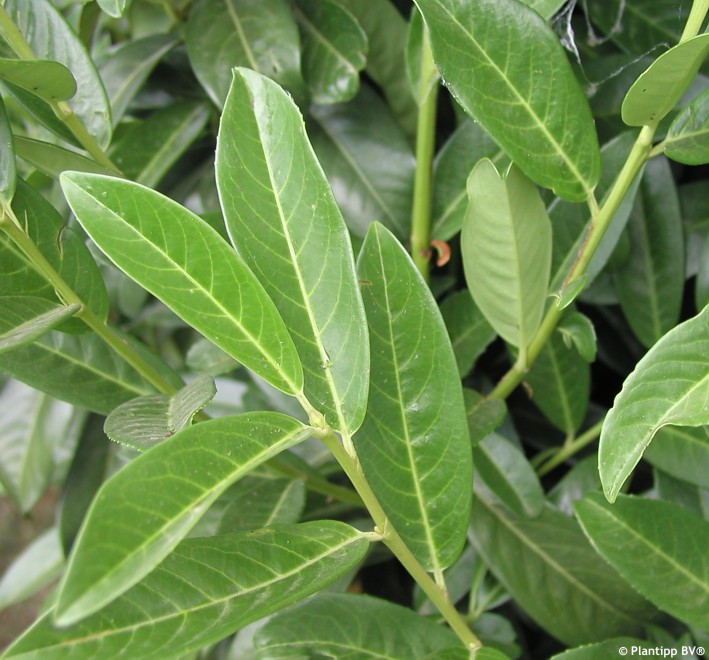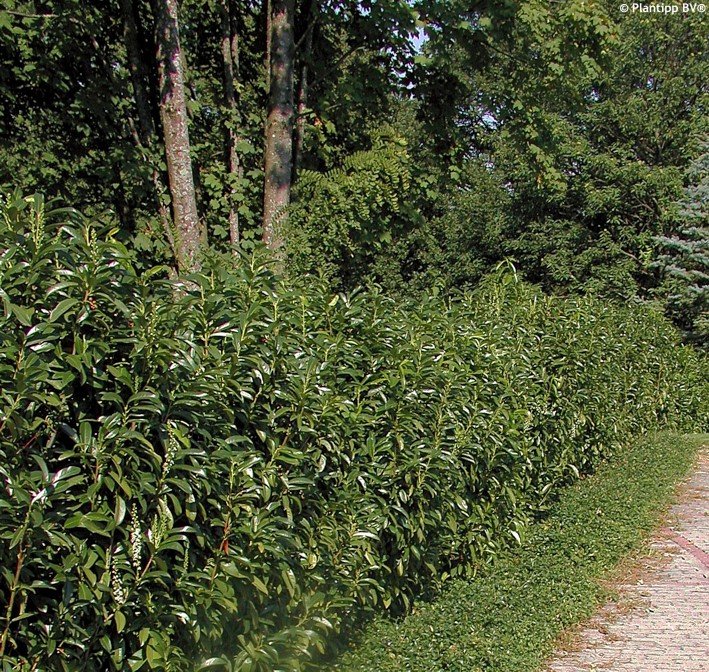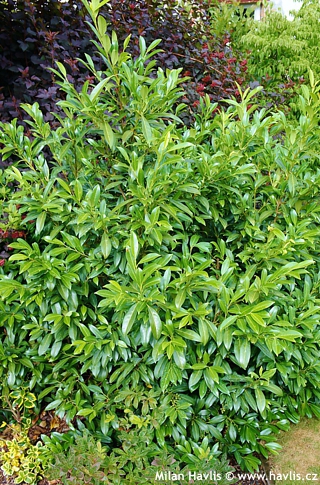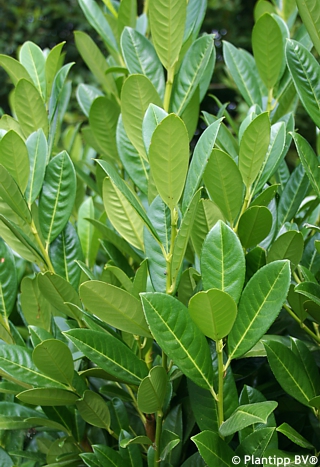Prunus laurocerasus 'Mariblon' GENOLIA® cherry laurel
Prunus
We are specialists in evergreen plants and we offer the widest possible range of quality plants. English (cherry) laurel is probably the most common and reliable species.
GENOLIA® is an excellent addition to the family of hedging cherry laurels. It comes from Switzerland, and was bred by Pepiniéres de Genolier in 2002. It forms a handsome, columnar, evergreen shrub which requires no pruning to look recent great. Leathery leaves are mid to dark green, narrowly ovate, and glossy. Its naturally upright habit makes it ideal for a hedge, however, it can serve as a slender, free-standing, evergreen specimen in small gardens. It was awarded silver medal at Plantarium 2005, a leading European trade fair of novelties.
Cherry laurels have compound inflorescence made out of small, white, fragrant flowers that appear in April and May. They are followed by very ornamental fruits which, as recent studies confirmed, are not poisonous. Only seeds from unripe fruit if properly chewed may cause discomfort as they contain the same toxin like bitter almonds (source: Plants For A Future - www.pfaf.org). If you want to prune it, do so in mid spring before new leaves emerge or in mid summer.
Laurels need slightly deep and fertile, acidic, moist soil, and extra watering in frost-free periods in winter to prevent from drying out before the ground gets frozen. It will thrive in full sun or part shade, and will also tolerate being grown in full shade. It seldom suffers from chlorosis (leaves turning yellow owing to lack of iron in the soil) but when it does use a special liquid soil pH balancer to keep it acidic which will help the plant absorb iron. Fully hardy to at least -23°C (USDA zone 6), possibly more.
Last update 29-10-2018
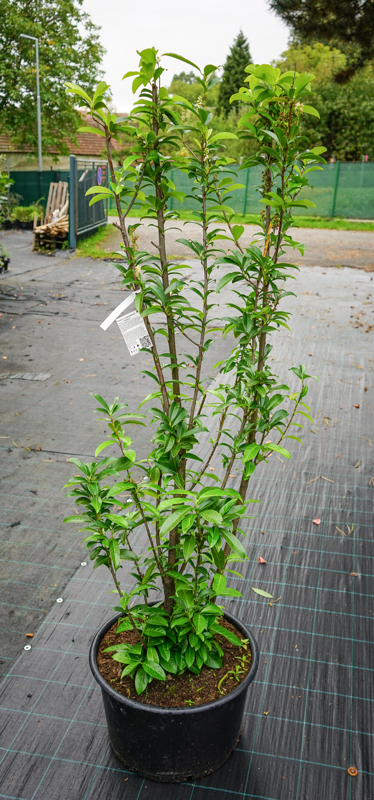
3 867,5 Kè

3 867,5 Kè

8 160 Kè
Goods are shipped all over Europe. For Russia and U.K. and for further details please read about SHIPPING OPTIONS HERE.
Are you interested in a serious discount for orders NOV-FEB? Check your options here.
THE PRICES INCLUDE VAT of 15%. For quick conversion you can use 1 CZK = approx. 0.04 EUR
- STANDARD QUALITY - Plants of this group are 1st class quality with number of branches and overall density adequate to their size and age, considering they were container grown.
- DE LUXE QUALITY - This label guarantees a luxurious quality of manually selected plants that, compared to their height and age, are exceptionally dense and beautiful.
- EXTRA - These plants are usually mature and bigger specimens with exceptional overall appearance.
- STANDARD (as described in the plant form) means a tree with a trunk of 190-210 cm and a crown at the top, unless specified differently. The commercial size for trees is their girth measured in the height of 1m from ground.
- HOBBY - These plants are of the same quality as our standard-quality plants but younger and therefore cheaper.
- SHRUB - a woody plant with branches growing bushy from the ground level.
- HALF-STANDARD or MINI-STANDARD - a small tree with shorter trunk, its size is usually specified.
- FEATHERED - These are trees with branches growing already from the base of the trunk and up along the stem.
- GRASSES and PERENNIALS - Sizes given usually read the diameter of the pot or the clump, as specified.












